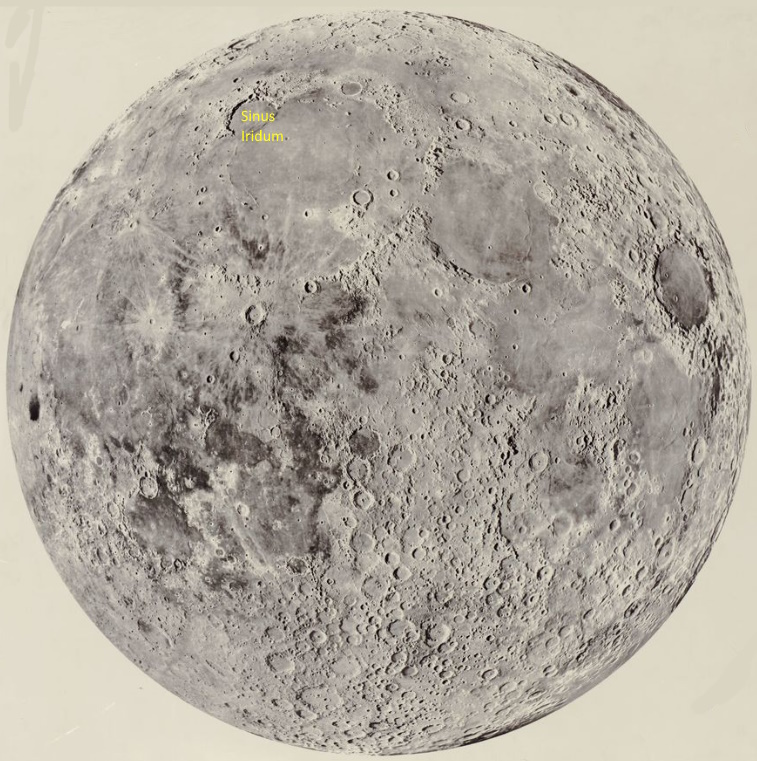Many city dwellers can see only the brightest stars, if any, at night. But the full moon, at magnitude of -12.7, is more than 28,000 times brighter than the brightest star, Sirius, at magnitude −1.46. Many amateur astronomers feel the moon is boring, preferring instead to observe deep-sky objects like nebula and star clusters. But the surface of the moon is actually very interesting, albeit from a geological point of view.

One of the most interesting features on the moon is Sinus Iridum, Bay of Rainbows. It is located on the north-east side of Mare Imbrium near the north-east corner of the moon. (Remember, many telescopes will provide an inverted view). Sinus Iridum is a large crater whose south-west wall has been virtually destroyed. Its north-east side is ringed by the Jura Mountains, atop which sits Bianchini crater. The south end of the Jura Mountains ends with Cape Heraclides, which some people say resembles a moon maiden.

As you know the moon goes through phases. The line between the sunlit side and the dark side is called the terminator. Surface features near the terminator appear best because they cast long shadows. Features of Sinus Iridum appear best on the moon about 11 days after new moon. Most experienced observers say the best magnification for observing the moon is between 150x - 200x. One of the most satisfying things to do with moon observing is to use a soft lead pencil to draw what you see. Draw at a somewhat large scale, bigger than what you see in the eyepiece.
Most people think the moon is geologically inactive, but the Lunar Reconnaissance Orbiter (LRO) has identified more than 200 new impact craters since its launch in 2009, one of them 43 meters in diameter. Someday a large meteorite will make an impact, and wouldn't it be amazing to have before and after drawings?

